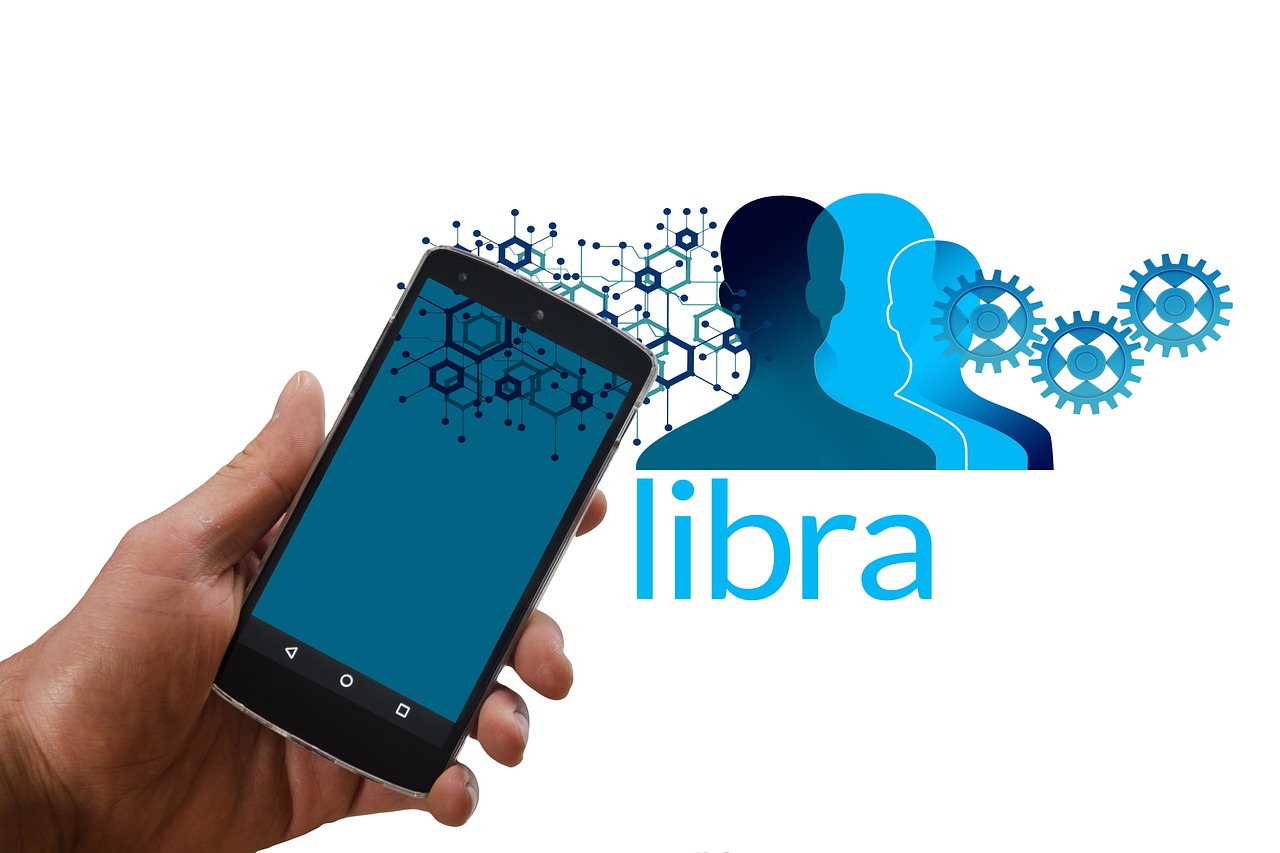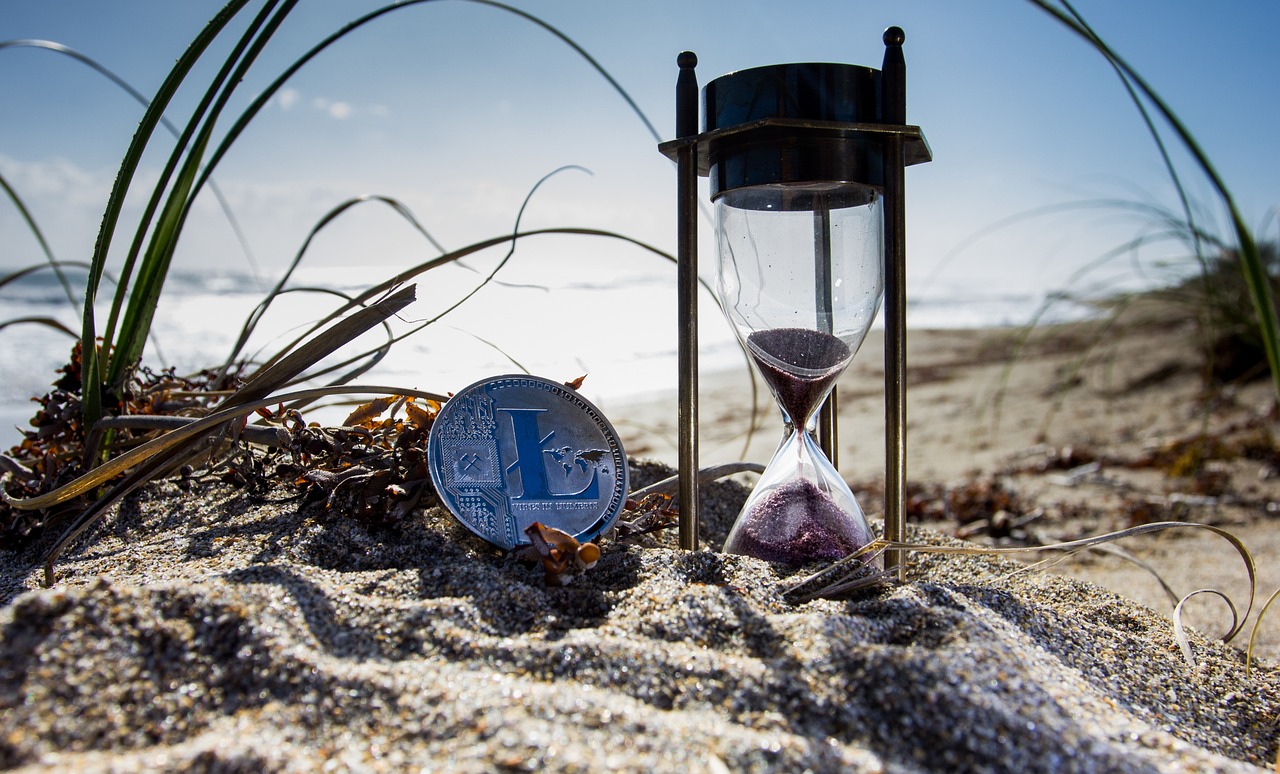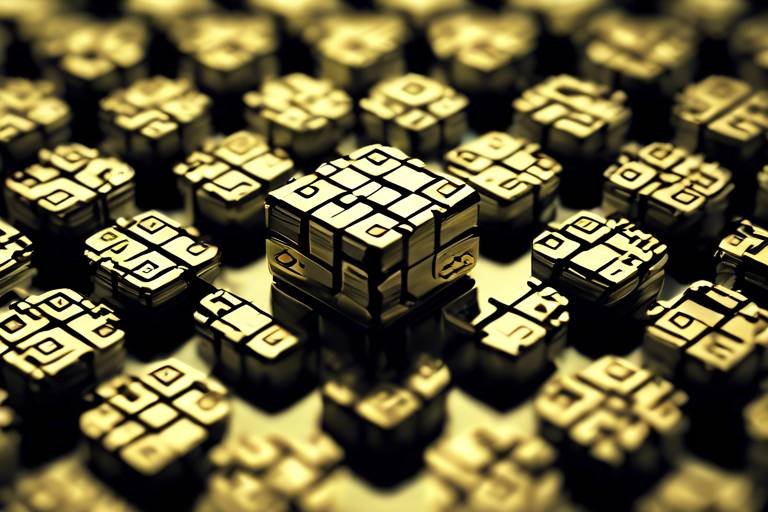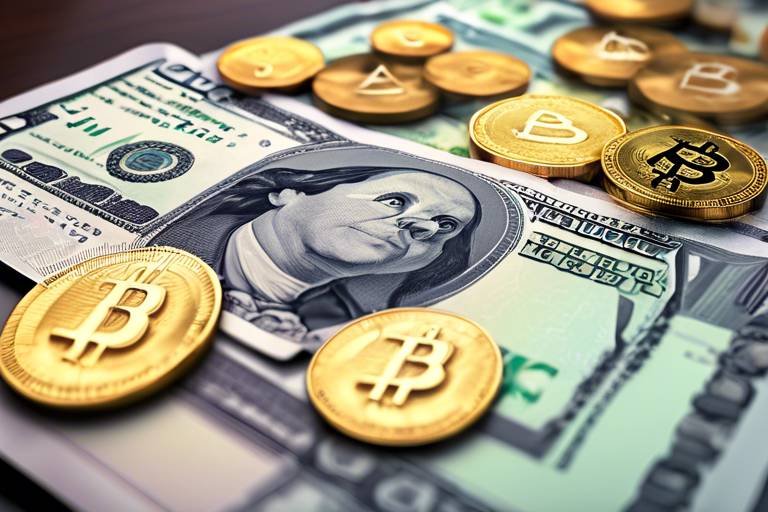How Blockchain is Transforming Digital Rights Management
In our increasingly digital world, the way we manage rights to content is undergoing a dramatic transformation, thanks to the revolutionary technology known as blockchain. Imagine a world where artists, authors, and creators can share their work without fear of piracy or mismanagement. This isn't just a dream; it's becoming a reality as blockchain steps in to provide a solution that enhances security, transparency, and efficiency in digital rights management (DRM).
Traditionally, DRM has been a complex and often frustrating landscape for content creators. They have had to rely on centralized authorities, which can lead to issues such as copyright infringement, lack of fair compensation, and a general distrust between creators and consumers. Enter blockchain: a decentralized system that not only addresses these challenges but also empowers creators to take control of their own rights. With its ability to securely store information, blockchain allows for the creation of immutable records that can verify ownership and usage rights without the need for a middleman.
So, how does this all work? Think of blockchain as a digital ledger that records every transaction made with a piece of content. Each entry is time-stamped and linked to the previous one, creating a chain of information that is almost impossible to alter. This ensures that every creator can track their work's journey, from creation to consumption, and receive fair compensation along the way. It's like having a personal assistant dedicated to managing your rights, ensuring you get paid every time someone uses your content.
Moreover, blockchain technology is not just about tracking ownership; it also introduces the concept of smart contracts. These self-executing contracts automatically enforce the terms agreed upon by both parties, eliminating the need for intermediaries. For example, if a musician licenses their song for use in a film, a smart contract can automatically distribute royalties to the artist every time the film is streamed. This not only speeds up the payment process but also increases trust between creators and distributors.
As we delve deeper into the impact of blockchain on DRM, we will explore specific case studies that illustrate its effectiveness across various industries, including music and publishing. These examples will highlight how real-world applications of blockchain are not just theoretical but are actively changing the landscape for creators everywhere.
- What is digital rights management? Digital rights management (DRM) refers to the technologies used to control the use of digital content and devices after the initial sale.
- How does blockchain enhance DRM? Blockchain enhances DRM by providing a secure, transparent, and decentralized way to manage rights and royalties, ensuring that creators are fairly compensated.
- What are smart contracts? Smart contracts are self-executing contracts with the terms of the agreement directly written into code, allowing for automatic execution without intermediaries.
- Can blockchain prevent piracy? While no system can completely eliminate piracy, blockchain's secure tracking and ownership verification significantly reduce the risk.

The Basics of Digital Rights Management
Understanding digital rights management (DRM) is crucial for grasping how blockchain can improve it. At its core, DRM is a set of technologies and practices designed to protect the rights of creators and owners of digital content. Think of it as a digital lock on your favorite song or eBook, ensuring that only those who have paid for it can access it. However, the traditional methods of DRM often come with significant challenges that can frustrate both creators and consumers alike.
One of the primary challenges of traditional DRM is the reliance on centralized systems. These systems are prone to failures and breaches, leading to issues like unauthorized access and piracy. Imagine a bank with a single vault; if that vault is compromised, everything inside it is at risk. Similarly, when a central authority controls digital content, it becomes a target for hackers and pirates, undermining the very purpose of DRM.
Moreover, traditional DRM can be cumbersome for users. Many systems require complicated authentication processes or limit the number of devices on which content can be accessed. This creates a frustrating experience for consumers who just want to enjoy their purchases without jumping through hoops. Additionally, the lack of transparency in these systems can lead to disputes over ownership and usage rights, leaving creators vulnerable and consumers confused.
Given these challenges, there is an urgent need for innovative solutions in the digital landscape. This is where blockchain technology comes into play. By leveraging the unique features of blockchain, we can address these issues head-on. The decentralized nature of blockchain means that there is no single point of failure, enhancing security for both creators and consumers. Furthermore, blockchain offers a transparent and immutable ledger, allowing for clear tracking of ownership and usage rights.
In summary, while traditional DRM has served its purpose, it is clear that it is not without its flaws. The need for a more secure, efficient, and user-friendly approach to managing digital rights has never been greater. As we delve deeper into the world of blockchain technology, we will uncover how these innovations can reshape the future of digital rights management.
- What is Digital Rights Management (DRM)?
DRM refers to technologies used to control how digital content is used and distributed, protecting the rights of creators and owners. - What are the main challenges of traditional DRM?
Challenges include reliance on centralized systems, security vulnerabilities, user frustration, and lack of transparency. - How can blockchain improve DRM?
Blockchain can enhance security through decentralization, provide transparency with an immutable ledger, and streamline processes with smart contracts.

Introduction to Blockchain Technology
Blockchain technology is often hailed as a game changer in various industries, and for good reason. At its core, blockchain is a decentralized ledger that records transactions across multiple computers in such a way that the registered transactions cannot be altered retroactively. This means that once information is added to the blockchain, it is nearly impossible to change, making it a highly secure method for managing data. Imagine a digital notebook that everyone can see and write in, but once you write something down, it can’t be erased or modified. That’s the essence of blockchain!
One of the key features of blockchain is its transparency. Every participant in the network has access to the entire database and its complete history. This characteristic not only fosters trust among users but also ensures that all transactions are verifiable. In the context of digital rights management (DRM), this means that every time a piece of content is used or shared, it can be tracked back to its original creator, eliminating disputes over ownership and usage rights. Furthermore, the decentralized nature of blockchain means that there’s no single point of failure, which enhances its security against hacks and fraud.
Another essential aspect of blockchain technology is its use of cryptography. Each transaction is secured using cryptographic techniques, ensuring that only authorized users can access or modify the data. This layer of security is crucial in protecting digital content from piracy and unauthorized access. For creators, this means that their work is safe, and they can focus on what they do best—creating! The combination of decentralization, transparency, and cryptography makes blockchain a powerful tool for addressing the challenges faced in digital rights management.
To better understand how blockchain operates, let’s break down its primary components:
| Component | Description |
|---|---|
| Nodes | Individual computers that participate in the blockchain network, maintaining a copy of the entire blockchain. |
| Blocks | Data structures that hold a collection of transactions, which are added to the blockchain in chronological order. |
| Consensus Mechanism | The method by which nodes agree on the validity of transactions; popular mechanisms include Proof of Work and Proof of Stake. |
| Smart Contracts | Self-executing contracts with the terms of the agreement directly written into code, allowing for automated enforcement of agreements. |
In summary, blockchain technology is not just a buzzword; it's a revolutionary system that offers innovative solutions to longstanding issues in digital rights management. By leveraging its unique features, content creators can regain control over their work, ensuring that they are fairly compensated and that their rights are protected. As we delve deeper into this topic, we will explore how these principles are being applied in real-world scenarios, particularly in the fields of music and publishing.

Decentralization and Its Benefits
Decentralization is more than just a buzzword in the world of blockchain; it's a transformative principle that reshapes how we think about digital rights management (DRM). Imagine a world where content creators no longer have to rely on a central authority to manage their work. Instead, they can directly engage with their audience, ensuring that their rights and revenues are protected. This shift not only empowers creators but also enhances the overall experience for consumers. With decentralization, the power dynamics in the digital landscape are fundamentally altered, leading to a more equitable distribution of resources.
One of the most significant benefits of decentralization is the enhanced security it offers. In traditional DRM systems, a single point of failure can lead to catastrophic breaches, exposing sensitive information and intellectual property to unauthorized access. However, with blockchain technology, data is distributed across a network of nodes, making it virtually impossible for hackers to manipulate or erase information. This means that creators can retain control over their work, knowing that their rights are safeguarded by the inherent security features of blockchain.
Moreover, decentralization fosters transparency and trust among all parties involved in the digital content ecosystem. When ownership and usage rights are recorded on a blockchain, every transaction is visible and verifiable. This transparency helps to eliminate disputes over rights and payments, as all stakeholders can access the same information. For instance, if an artist's music is streamed, both the artist and the platform can see the transaction history, ensuring that everyone is compensated fairly. This level of clarity builds trust, which is essential in an industry often plagued by confusion and mistrust.
In addition to security and transparency, decentralization also enhances efficiency. Traditional DRM systems often require multiple intermediaries, leading to delays and increased costs. With blockchain, smart contracts can automate licensing agreements and enforce terms without the need for third parties. This not only speeds up the process but also reduces transaction fees, allowing creators to keep more of their earnings. Imagine an artist releasing a new song and instantly receiving payment as soon as someone streams it, all without the hassle of dealing with record labels or distributors. This is the power of decentralization in action.
In summary, the decentralization offered by blockchain technology is a game-changer for digital rights management. By removing central authorities, enhancing security, promoting transparency, and increasing efficiency, blockchain empowers content creators and consumers alike. As we continue to explore the potential of this technology, it’s clear that decentralization will play a pivotal role in shaping the future of DRM.
- What is decentralization in blockchain? Decentralization refers to the distribution of authority and control across a network, eliminating the need for a central governing body.
- How does decentralization enhance security? By distributing data across multiple nodes, decentralization makes it difficult for hackers to access or alter information, thereby protecting digital content.
- Can decentralization improve transparency? Yes, because all transactions are recorded on a public ledger, stakeholders can verify ownership and usage rights, fostering trust.
- What role do smart contracts play in decentralization? Smart contracts automate agreements and enforce terms on the blockchain, reducing the need for intermediaries and increasing efficiency.

Enhanced Security Features
In the digital age, where content is easily replicated and shared, the need for robust security measures has never been more critical. Blockchain technology emerges as a powerful ally in this battle against unauthorized access and piracy. The inherent cryptographic nature of blockchain provides an advanced level of security that traditional digital rights management systems struggle to achieve. By leveraging cryptography, blockchain ensures that data is not only secure but also immutable, meaning once information is recorded, it cannot be altered without consensus from the network.
One of the standout features of blockchain is its ability to create a decentralized ledger. Unlike conventional systems that rely on a central authority to manage and verify transactions, blockchain distributes this responsibility across a network of nodes. This decentralization significantly reduces the risk of a single point of failure, making it far more challenging for hackers to compromise the system. Imagine a vault that is not just locked but is also duplicated thousands of times across various locations. Even if one lock is picked, the others remain secure, safeguarding the content within.
Moreover, blockchain enables content creators to set specific access controls through smart contracts. These contracts automatically execute predefined conditions, ensuring that only authorized users can access or use the digital content. For example, an artist can create a smart contract that allows their music to be streamed only after a fee is paid. This not only protects their work but also guarantees that they receive fair compensation without needing a middleman to manage transactions.
To illustrate the enhanced security features of blockchain in digital rights management, consider the following table that highlights key benefits:
| Feature | Description |
|---|---|
| Cryptography | Ensures data integrity and confidentiality through advanced encryption techniques. |
| Decentralization | Eliminates single points of failure, making it harder for unauthorized access. |
| Smart Contracts | Automates agreements, ensuring that terms are met without the need for intermediaries. |
| Immutability | Records cannot be altered without consensus, providing a reliable history of ownership and rights. |
In conclusion, the enhanced security features of blockchain technology not only protect digital content but also empower creators by giving them greater control over their work. As the digital landscape continues to evolve, the adoption of blockchain in digital rights management will likely become a standard practice, ensuring that creators can thrive in a secure and transparent environment.
- What is blockchain technology? Blockchain is a decentralized digital ledger that records transactions across many computers securely and immutably.
- How does blockchain enhance security in digital rights management? By using cryptographic techniques, decentralization, and smart contracts, blockchain provides a secure framework for managing digital content rights.
- Can blockchain prevent piracy? While it can't eliminate piracy entirely, blockchain significantly reduces the risk by ensuring that ownership and usage rights are clearly defined and protected.
- What are smart contracts? Smart contracts are self-executing contracts with the terms of the agreement directly written into code, allowing for automated enforcement of agreements.

Transparency and Traceability
When we think about the digital world, one of the biggest challenges we've faced is the lack of transparency in how content is managed. Blockchain technology steps in like a superhero, bringing a level of clarity that’s been sorely missing. Imagine a world where every transaction related to digital content is recorded in an immutable ledger that everyone can see. That’s the power of blockchain! With its decentralized nature, it allows for clear tracking of ownership and usage rights, which is a game changer for creators, distributors, and consumers alike.
Let’s break it down a bit more. Traditionally, if you wanted to know who owns a piece of digital content or how it’s been used, you often had to wade through a maze of contracts and intermediaries. This not only wastes time but can also lead to disputes and misunderstandings. However, with blockchain, every piece of content can have a unique digital fingerprint, so to speak. This fingerprint is recorded on the blockchain, allowing anyone to trace its history at any time.
Here’s how transparency and traceability work hand in hand:
- Ownership Verification: Blockchain allows for easy verification of who owns what. Each transaction is recorded, meaning you can see the entire history of ownership.
- Usage Rights Tracking: Content creators can specify how their work can be used, and these terms are stored on the blockchain, making them unchangeable and easily accessible.
- Dispute Resolution: With a clear record of ownership and usage rights, disputes can be resolved quickly and fairly, reducing the need for costly legal battles.
Moreover, this level of transparency fosters a sense of trust among all parties involved. Creators can feel confident that their rights are being respected, while consumers can verify the authenticity of the content they are purchasing or accessing. In essence, blockchain technology is not just about securing content; it’s about building a community based on trust and accountability.
In conclusion, the transparency and traceability that blockchain offers are not just buzzwords; they represent a fundamental shift in how we manage digital rights. By eliminating ambiguity and providing clear, accessible records, blockchain empowers creators and consumers alike, paving the way for a more equitable digital landscape.
Q: How does blockchain ensure transparency in digital rights management?
A: Blockchain ensures transparency by recording every transaction related to digital content in an immutable ledger that can be accessed by all parties involved. This means ownership and usage rights can be easily verified at any time.
Q: Can blockchain help prevent copyright infringement?
A: Yes, by providing a clear record of ownership and usage rights, blockchain can help deter unauthorized use of content, making it easier for creators to enforce their rights.
Q: What role do smart contracts play in this process?
A: Smart contracts automate and enforce agreements on the blockchain, ensuring that the terms of use are met without the need for intermediaries, which streamlines the licensing process.
Q: Is blockchain technology widely adopted in digital rights management yet?
A: While it's still in the early stages, several industries, including music and publishing, are beginning to adopt blockchain for digital rights management, showcasing its potential to transform the landscape.

Smart Contracts in Digital Rights Management
Smart contracts are like the unsung heroes of the blockchain world, quietly revolutionizing the way digital rights are managed. Imagine a contract that executes itself automatically when certain conditions are met—no lawyers, no lengthy negotiations, just pure efficiency. That's precisely what smart contracts bring to the table in the realm of digital rights management (DRM). By automating agreements, smart contracts eliminate the need for intermediaries, allowing creators to focus on what they do best: creating.
Think of smart contracts as digital vending machines. You insert the right amount of money (or in this case, fulfill specific conditions), and out pops your desired outcome without any human intervention. This streamlined process is especially beneficial for managing licensing agreements in the digital content space. For instance, when a song is streamed on a platform, a smart contract can automatically distribute royalties to the artist, producer, and any other stakeholders based on predefined terms. This ensures that everyone gets paid fairly and promptly, which is a game-changer in an industry often plagued by delays and disputes.
Moreover, the transparency of blockchain technology enhances the reliability of these smart contracts. Every transaction is recorded on a public ledger, making it easy to verify that the terms of the contract have been met. This level of transparency fosters trust among all parties involved, from content creators to consumers. No more hidden fees or fine print; everything is laid bare for everyone to see. Imagine a world where artists don’t have to worry about whether they’ll receive their fair share of revenue. Sounds pretty great, right?
To illustrate the effectiveness of smart contracts in DRM, let’s consider a few key benefits:
- Automation: Smart contracts execute automatically, reducing the time and effort involved in managing agreements.
- Cost-Effectiveness: By removing intermediaries, creators save money that would otherwise go to agents or legal fees.
- Accuracy: The risk of human error is minimized, ensuring that all parties adhere to the contract terms precisely.
- Real-Time Updates: Changes in ownership or rights can be updated instantly on the blockchain, keeping everyone informed.
While the potential of smart contracts in DRM is vast, it’s essential to navigate the challenges that come along with this innovation. Issues such as legal recognition, technological adoption, and the need for standardization can pose hurdles. However, as more industries recognize the value of blockchain technology, these challenges will likely be addressed, paving the way for a more efficient and fair digital landscape.
In conclusion, smart contracts represent a significant leap forward in the management of digital rights. By harnessing the power of blockchain, they offer a transparent, automated, and cost-effective solution that benefits creators and consumers alike. As we continue to explore the potential of this technology, it’s exciting to envision a future where digital rights management is not just efficient but also equitable.
- What are smart contracts? Smart contracts are self-executing contracts with the terms of the agreement directly written into code on the blockchain.
- How do smart contracts improve digital rights management? They automate the execution of agreements, reduce the need for intermediaries, and enhance transparency and trust among parties.
- Can smart contracts be altered once deployed? Generally, smart contracts are immutable, meaning once they are deployed, their terms cannot be changed. However, new contracts can be created to replace or update previous agreements.
- Are there any legal implications of using smart contracts? The legal recognition of smart contracts varies by jurisdiction, and it’s essential to consult legal experts when implementing them in business operations.

Case Studies of Blockchain in Action
When it comes to the practical application of blockchain technology in digital rights management (DRM), there are several compelling case studies that highlight its transformative potential. These real-world examples demonstrate how blockchain is not just a theoretical concept but a practical solution that addresses the complexities of managing digital content rights. Let's dive into some noteworthy instances where blockchain has made a significant impact.
One of the most prominent sectors embracing blockchain is the music industry. Artists and record labels are increasingly turning to blockchain to streamline the management of royalties and protect their intellectual property. For instance, platforms like Myco and Ujo Music have emerged, allowing musicians to register their work on the blockchain. This not only ensures that they receive fair compensation for their creations but also provides a transparent ledger that tracks every usage and distribution of their music. As a result, artists can see exactly where their music is being played and how much they are earning, eliminating the opaque processes that have long plagued the industry.
In addition to music, the publishing sector is also reaping the benefits of blockchain technology. Authors and publishers are using blockchain to secure copyrights and manage distribution in a more efficient manner. For example, the platform Publiq allows writers to publish their work directly onto the blockchain, ensuring that they maintain ownership and control over their content. This not only protects their intellectual property but also facilitates a fairer revenue-sharing model. By using smart contracts, authors can set their own terms for licensing and distribution, ensuring that they are compensated fairly without the need for intermediaries.
To further illustrate the impact of blockchain in DRM, let's take a look at a table summarizing some key case studies:
| Industry | Platform | Key Benefits |
|---|---|---|
| Music | Myco, Ujo Music | Transparent royalty tracking, fair compensation for artists |
| Publishing | Publiq | Secure copyrights, direct revenue sharing with authors |
| Film | FilmChain | Streamlined distribution, transparent revenue tracking |
Moreover, the film industry is also beginning to explore blockchain's capabilities. Platforms like FilmChain are working to address the challenges of revenue distribution in film production. By utilizing blockchain technology, filmmakers can ensure that all stakeholders—from producers to actors—are compensated fairly and transparently based on the revenue generated from their work. This not only fosters trust among collaborators but also encourages more creative projects to flourish.
In conclusion, these case studies exemplify how blockchain technology is revolutionizing digital rights management across various industries. By enhancing transparency, security, and efficiency, blockchain is paving the way for a more equitable landscape for content creators. As more sectors begin to adopt this innovative technology, we can expect to see even more groundbreaking solutions to the challenges of DRM.
- What is blockchain technology?
Blockchain is a decentralized digital ledger that records transactions across many computers in a way that ensures the security and transparency of data. - How does blockchain improve digital rights management?
It enhances security, provides transparent tracking of ownership, and automates agreements through smart contracts, reducing the need for intermediaries. - Are there any risks associated with blockchain in DRM?
While blockchain offers many benefits, there are potential risks such as regulatory challenges and the need for widespread adoption to achieve full effectiveness.

Music Industry Innovations
The music industry is undergoing a seismic shift thanks to the advent of blockchain technology. Artists, producers, and even fans are starting to realize the immense potential that blockchain holds for reshaping how music is created, distributed, and monetized. Imagine a world where musicians can directly connect with their audience, bypassing traditional intermediaries like record labels and streaming services. This is not just a dream; it's becoming a reality through innovative blockchain solutions.
One of the most significant innovations in this space is the ability to manage and distribute royalties more effectively. Traditionally, artists have faced challenges in tracking their earnings, often receiving only a fraction of what they are owed due to complicated royalty distribution systems. With blockchain, every transaction is recorded on a public ledger, ensuring transparency and accuracy in royalty payments. This means artists can finally receive their fair share without the fear of being shortchanged.
Moreover, smart contracts play a crucial role in this transformation. These self-executing contracts automatically enforce the terms of agreements between artists and distributors. For example, if a song is streamed, a smart contract can instantly calculate the royalties owed and transfer the funds directly to the artist's wallet. This not only speeds up the payment process but also eliminates the need for intermediaries, thereby reducing costs.
Additionally, blockchain technology allows for enhanced fan engagement. Artists can create unique tokens that represent ownership of a song or album, which fans can purchase. This creates a new revenue stream for artists while giving fans a sense of ownership and connection to the music they love. Imagine owning a piece of your favorite artist's work and even receiving exclusive content or merchandise as a reward! This direct relationship fosters a deeper bond between artists and their audience.
To illustrate the impact of blockchain in the music industry, let's take a look at a few pioneering platforms:
| Platform | Description | Key Features |
|---|---|---|
| Myco | A blockchain-based platform for music distribution. | Direct payments to artists, transparent royalty tracking. |
| Ujo Music | Empowers artists to manage their music rights. | Smart contracts for royalty distribution, fan engagement tools. |
| Vezt | A platform that allows fans to invest in songs. | Fan ownership, revenue sharing through tokenization. |
These platforms are just the tip of the iceberg when it comes to the innovations blockchain is bringing to the music industry. As more artists and labels adopt this technology, we can expect to see a more equitable and transparent ecosystem emerge. The potential for reducing piracy and ensuring that creators are compensated fairly is immense. In a world where artists can retain control over their work, the future of music looks brighter than ever.
As we continue to explore the intersection of technology and creativity, one thing is clear: blockchain is not just a buzzword; it’s a game-changer for the music industry and beyond. The innovations being developed today will set the stage for the next generation of music creation and consumption, empowering artists and fans alike.
- How does blockchain prevent piracy in the music industry? Blockchain's decentralized nature and cryptographic security make it difficult for unauthorized copies of music to circulate, as every transaction is recorded and traceable.
- What are smart contracts, and how do they work in music? Smart contracts are self-executing agreements coded on the blockchain. They automatically enforce terms, such as royalty payments, without needing a middleman.
- Can fans really own a piece of a song? Yes! Through blockchain, artists can tokenize their music, allowing fans to purchase ownership shares and receive benefits.
- Is blockchain technology expensive to implement for artists? While there may be initial costs, the long-term benefits of reduced fees and increased revenue can outweigh these expenses.

Publishing and Copyright Management
The world of publishing has always been a tangled web of rights, royalties, and regulations. For authors and publishers, managing copyright can feel like navigating a labyrinth with no clear exit. Enter blockchain technology, a game-changer that is revolutionizing how we think about publishing and copyright management. Imagine a world where every book, article, or piece of content has a secure, immutable record of ownership, ensuring that creators are fairly compensated for their work. Sounds dreamy, right? Well, it's becoming a reality.
One of the most significant advantages of blockchain in publishing is its ability to provide a decentralized ledger that records every transaction related to a piece of content. This means that whenever a book is sold, a royalty is generated, or a license is issued, the transaction is recorded on the blockchain. This not only enhances transparency but also reduces the chances of disputes over ownership and royalties. Authors can finally breathe a sigh of relief knowing that their rights are protected and that they will receive their fair share without the usual delays and complications.
Consider the traditional publishing model, which often involves multiple intermediaries—agents, publishers, distributors—each taking a cut of the profits. This can lead to confusion and frustration for authors who may not fully understand how their royalties are calculated. With blockchain, these intermediaries can be eliminated or at least significantly reduced. Smart contracts can automate the distribution of royalties, ensuring that payments are made instantly and accurately based on predefined terms. For example, if an author sells a book for $10, the smart contract can automatically allocate the agreed-upon percentage to the author, publisher, and any other stakeholders involved.
Moreover, blockchain technology also brings a new level of security to copyright management. With the rise of digital piracy, protecting intellectual property has become more critical than ever. Blockchain's cryptographic features create a secure environment where content can be stored and accessed without the risk of unauthorized duplication or distribution. This means that authors can confidently share their work, knowing that it is protected against theft and misuse.
To illustrate the potential of blockchain in publishing, consider a hypothetical scenario where an author publishes a new novel on a blockchain-based platform. Here’s how the process could unfold:
| Step | Description |
|---|---|
| 1 | The author uploads their manuscript to the blockchain platform. |
| 2 | A unique digital fingerprint (hash) is created and stored on the blockchain, verifying the author's ownership. |
| 3 | The author sets the terms for royalties and distribution through a smart contract. |
| 4 | Readers purchase the book, and the smart contract automatically distributes royalties based on the agreed terms. |
| 5 | All transactions are recorded on the blockchain, providing a transparent history of ownership and sales. |
As we can see, the integration of blockchain technology in publishing not only simplifies the process but also enhances trust between authors and readers. With every transaction recorded on a public ledger, there’s no room for doubt or deception. Authors can focus on what they do best—creating compelling content—while blockchain takes care of the rest.
In conclusion, blockchain is not just a buzzword; it's a transformative force in the publishing industry. By providing a secure, transparent, and efficient way to manage copyrights, it empowers authors and publishers alike. As we move forward, it will be exciting to see how this technology continues to evolve and shape the future of publishing.
- What is blockchain technology? Blockchain is a decentralized digital ledger that records transactions across many computers in a way that the registered transactions cannot be altered retroactively.
- How does blockchain enhance copyright management? Blockchain provides a secure and transparent way to record ownership and transactions, reducing disputes and ensuring fair compensation for creators.
- What are smart contracts? Smart contracts are self-executing contracts with the terms of the agreement directly written into code, enabling automatic execution of contractual terms without intermediaries.
- Can blockchain prevent digital piracy? Yes, blockchain’s cryptographic features help secure digital content, making it more difficult for unauthorized access and distribution.
Frequently Asked Questions
- What is Digital Rights Management (DRM)?
Digital Rights Management (DRM) refers to the technologies and strategies used to protect and manage the rights associated with digital content. It ensures that creators and copyright holders can control how their work is used, distributed, and monetized in the digital landscape.
- How does blockchain enhance DRM?
Blockchain enhances DRM by providing a decentralized and secure platform for managing digital rights. With its cryptographic features, blockchain protects content from unauthorized access and piracy, while also ensuring transparency in ownership and usage rights.
- What are smart contracts, and how do they relate to DRM?
Smart contracts are self-executing contracts with the terms of the agreement directly written into code on the blockchain. In the context of DRM, they automate licensing processes, ensuring that all parties adhere to the agreed terms without the need for intermediaries, thus streamlining operations.
- Can you provide examples of blockchain applications in the music industry?
Absolutely! The music industry is leveraging blockchain to manage royalties more efficiently. Artists can track their earnings directly through the blockchain, ensuring they receive fair compensation for their work while also protecting their intellectual property rights.
- How is blockchain being used in publishing?
In publishing, blockchain is helping authors and publishers secure copyrights and manage distribution. By utilizing blockchain, creators can ensure that their work is protected and that they receive appropriate compensation for every copy sold or accessed.
- What are the main benefits of using blockchain for digital rights management?
The main benefits include enhanced security against piracy, improved transparency in ownership and usage rights, and the ability to automate licensing agreements through smart contracts. This leads to a more trustworthy and efficient ecosystem for digital content.
- Is blockchain technology widely adopted in DRM yet?
While blockchain is still in the early stages of adoption in DRM, its potential is being recognized across various industries. Case studies and pilot projects are emerging, showcasing its effectiveness and paving the way for broader implementation in the future.



















